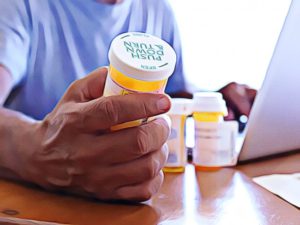One of the most popular drugs to date is Xanax. This drug is actually the brand name for the drug known as alprazolam and is prescribed as a treatment for anxiety and panic disorders.
Xanax works as a sedative medication, and it helps slow down the process of the brain, which ultimately slows down thinking. When taken in small doses, this drug can be useful in treating anxiety—those who have incredibly high levels of stress and worry as compared to others.
Although this drug is medically useful, it can be an addictive substance. Unfortunately, addiction can start even if the drug is prescribed for medication because it can be easily abused. Fortunately, many of those addicted to Xanax have sought addiction treatment and are eager to join rehabilitation programs to relieve themselves of drug addiction.
While the rehabilitation results can be rewarding, the journey is particularly difficult. Not only are you detoxifying your body from a substance it is addicted to, but the patient will also have to go through various withdrawal symptoms, which could take a toll on their physical and mental strength.
A great way to understand the treatment process for Xanax addiction is to dig deeper into the withdrawal symptoms of Xanax. Fortunately, our team has created a quick overview of the symptoms below.
What are the Signs and Symptoms of Xanax Withdrawals?
There’s no doubt that the experience of Xanax detoxification can be extremely unpleasant. However, it is a critical step to take so the patient can heal fully.
When it comes to detoxifying your body of a drug, you need to understand that the drug will have a half-life. And as for Xanax, its half-life is about 11 hours, so the drug will take around 50 hours until it is completely removed from the body. But you should know that this will be different for most people, especially when you consider the frequency of drug use.
If a person would like to stop taking Xanax and seek treatment, it’s best to reach out to a medical professional to provide the right addiction treatment and program based on the patient’s current needs.
Below are some of the physical withdrawal symptoms of Xanax:
- Seizures or convulsions
- Diarrhea
- Headache
- Increased menstrual bleeding, cramping, and breast tenderness for women
- Tachycardia or heart palpitations
- Nausea
- Vomiting
- Stiff/sore muscles
- Muscle spasms or twitches
- Tremors
- Excessive sweating
- Weight loss/gain
As for psychological withdrawal symptoms, the following may be experienced by the patient:
- Confusion
- Depression
- Insomnia
- Heightened senses
- Irritability
- Paranoia or fear
- Nervousness
- Tension
- Withdrawing from friends and family
What is the Timeline of Xanax Withdrawal?
If you are currently suffering from Xanax withdrawal, you are not alone—many have gone through the experience and have successfully recovered from addiction. Many people have turned to residential treatment for Xanax detox and recovery.

During this time, patients can take supplements, change their diet, and do physical activities to help their body go through the withdrawal process. Of course, a professional will guide them, especially when they experience adverse effects.
Stage 1: The Beginning
After the last dose, which would be about six to 12 hours, withdrawal symptoms will show. Patients will experience difficulties in sleeping, mental symptoms like anxiety and depression will start, and nausea and gastrointestinal issues will develop, to name a few.
During this stage, you must provide support right from the beginning. This way, the patient will feel cared for and supported, seeing as this journey can be extremely difficult for most people.
Stage 2: The Rebound
One to four days after the last dose, the psychological effects will intensify at this stage. Because of this, patients may experience rebound systems since their symptoms will start to get worse.
Stage 3: Going Downward
After the difficult period of the rebound stage, the symptoms will start to lessen on day five up to the fourteenth day. While anxiety and insomnia are still prevalent, other physical side effects have lessened. Not only that, but patients will also start to feel better around this stage; although not at their best yet, they are starting to feel more motivated at this stage.
Stage 4: The Final Stage
In most cases, the patient’s body will be free of the drug, and they will be able to undergo therapy and counseling to help them through the rest of the withdrawal process. They will be monitored to ensure they are on the right track to recovery. However, you should note that this journey will take a while for some people.
Also, it’s important to note that some people have reported mood symptoms for a few weeks and gastrointestinal symptoms.
How Long Do Withdrawals Last and How Long Does It Stay In Your System?
As for the timeline for withdrawal, it can be very different for every person. Some can experience it for a few days, while some can experience it for a few weeks. However, the general timeline for a complete withdrawal from Xanax will take about three to four weeks, not including the detoxification period.
As for how long it will stay in your system, it depends on the half-life of the drug. Xanax has a half-life of 11 hours, so it will take around 50 hours before it is completely out of the body. However, keep in mind that this can change depending on how much of the drug has been taken.
What Happens If You Try to Go “Cold Turkey”? Is It Dangerous?
As for going “cold turkey” or simply discontinuing Xanax use, you need to be aware that it can induce a wide range of withdrawal symptoms. While it may be tempting, this can be dangerous for some people.
Going “cold turkey” may lead to numerous risks, such as seizures, possible heart attack, and even risk of suicide and relapse. To stop Xanax fully and safely, it’s best to treat addiction with the guidance of a professional treatment center to ensure that the right medication and support is provided.
Conclusion: Medical Assistance is Crucial When Stopping Xanax
Xanax has many positive aspects but also can be highly addictive. While it does a great job in providing ease and comfort to those struggling with anxiety and depression, many have used the drug for recreational reasons and have gotten addicted to the substance.
Medical assistance for Xanax addiction is crucial to ensure the patient is detoxing their body safely and recovering from their addiction. Without medical assistance, the withdrawal process can be extremely difficult and uncomfortable, leading to further health problems.
Of course, detox is a critical stage a patient cannot miss because it makes them closer to recovery. But seeing as withdrawals can be extremely difficult, the patient must get all the medical assistance and support to go on with their journey to sobriety. Because of this, it’s important to seek medical attention for the patient and the family to undertake a treatment program that will help them get better.
Sources:
https://medlineplus.gov/druginfo/meds/a684001.html
















